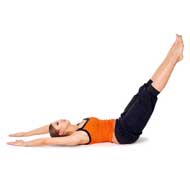Why You Should Practice Kegels Everyday
Though a potentially embarrassing problem, be assured that a flaccid vagina is more common than you may think. The muscles of the vagina may become loose and flaccid due to a number of reasons – childbirth and genetics being two of them. If loose vaginal muscles are preventing you from enjoying sex or satisfying your partner, there are exercises to control the pelvic muscles and train them to become tighter and stronger.
Kegel exercises should be added into every woman’s to-do list. This simple set of discreet pelvic exercises helps improve the musculature of the vagina as well as helps prevent urinary incontinence and other problems with the pelvic floor. Here is a step-by-step guide to practicing Kegels properly.
It may take some time to identify your pelvic floor muscles. Just breathe and relax and it will become apparent after a few tries. The best way to identify the pelvic muscles is to stop the flow while urinating. If you manage to stop urinating, then you have found the correct muscles. Now tighten these muscles and pause for 4-5 seconds and hold the contraction. Relax for a few seconds and continue to contract the muscles once again. As you build your strength, you can work your way up to contracting the muscles for 10 to 15 seconds at a time. Breathe easily and calmly throughout the exercise and do not clench the muscles of your butt, legs or abdomen. Repeat this exercise at least thrice a day for the best results.
The beauty of this exercise is that you can do your Kegels anytime and anywhere. Kegels are recommended during pregnancy, after childbirth and during old age. There is no age limit to start or stop doing these exercises though the results will be better if incontinence has not yet crept in.
Read more articles from the Yoga Exercises Category.

 Find Pose
Find Pose

